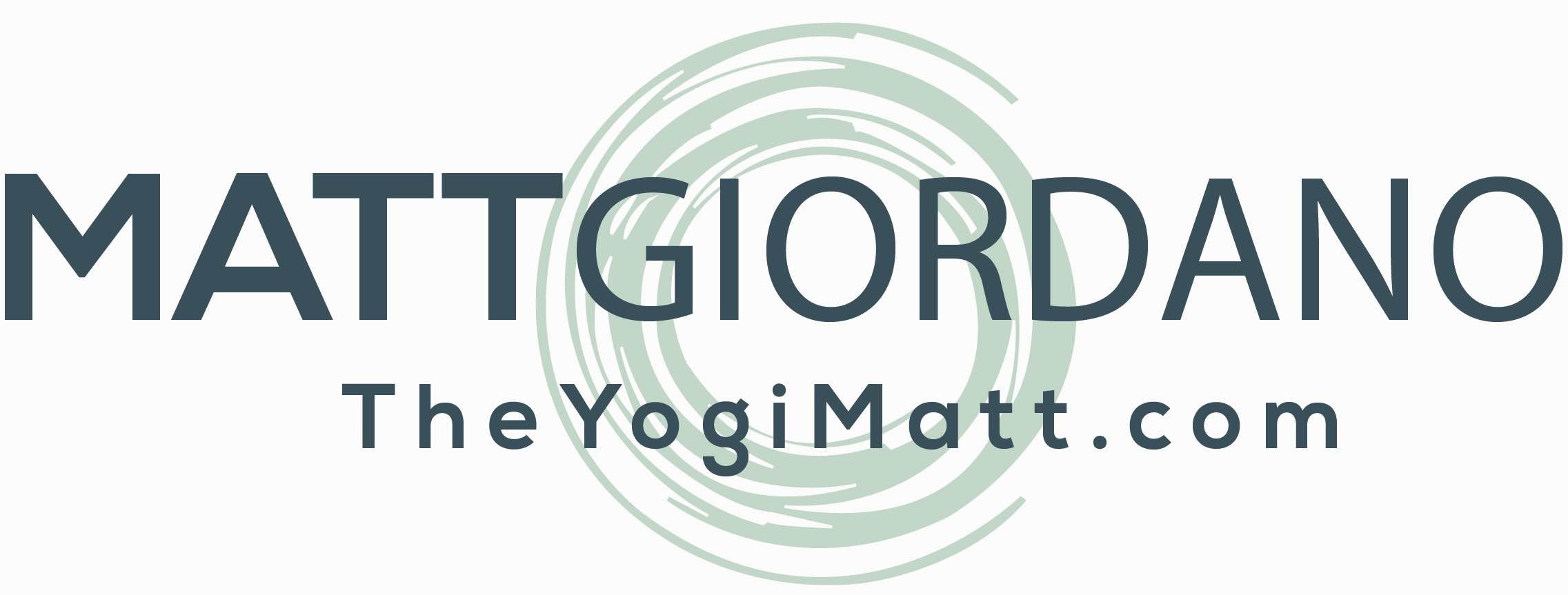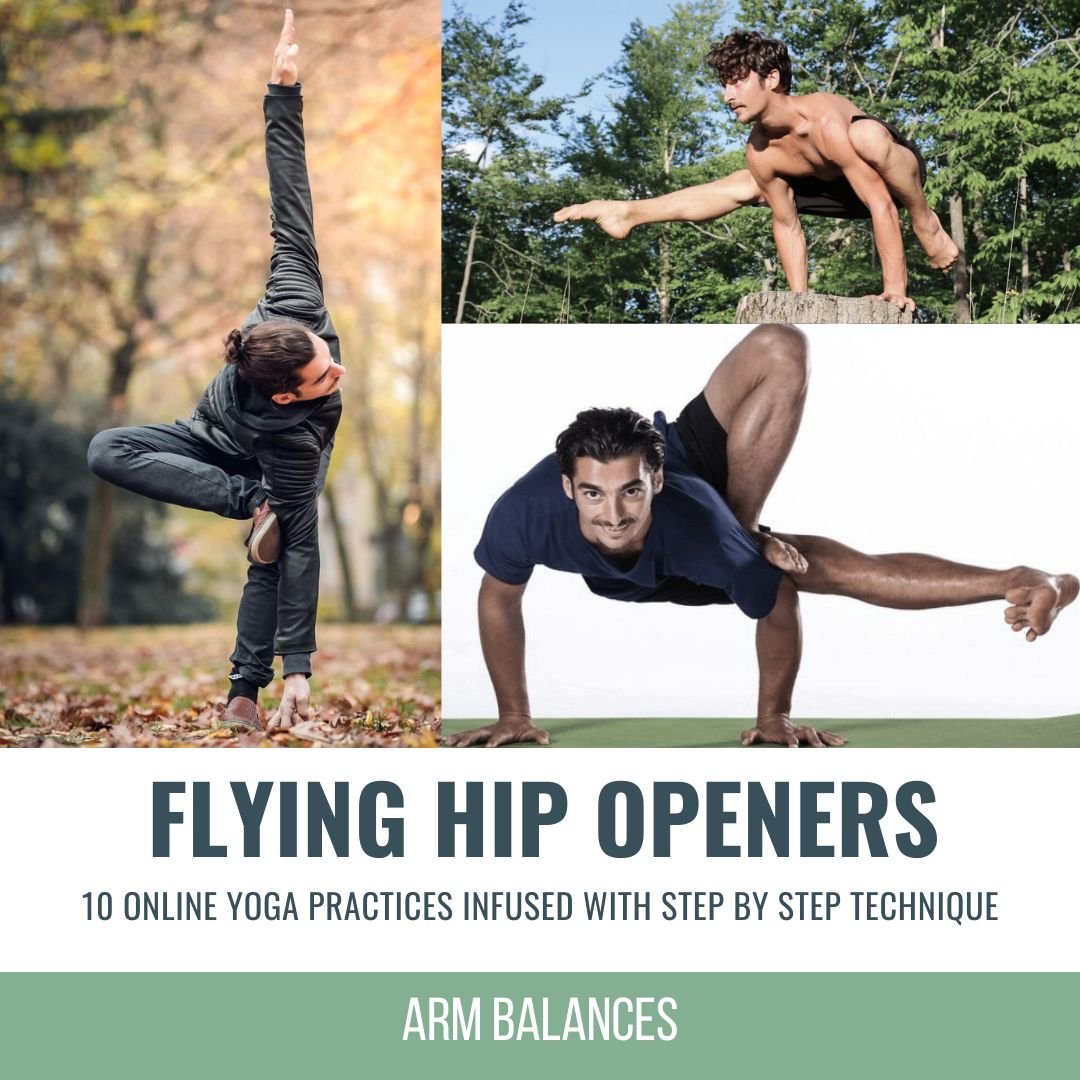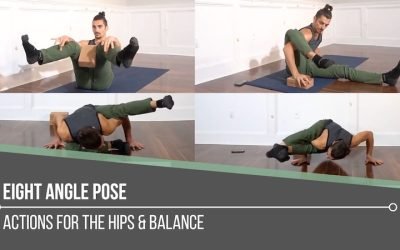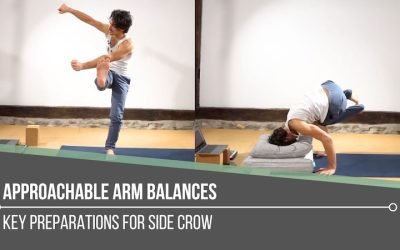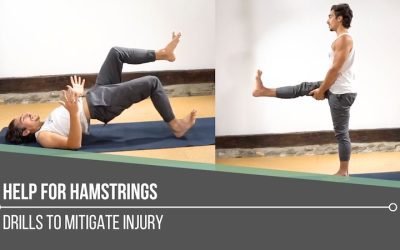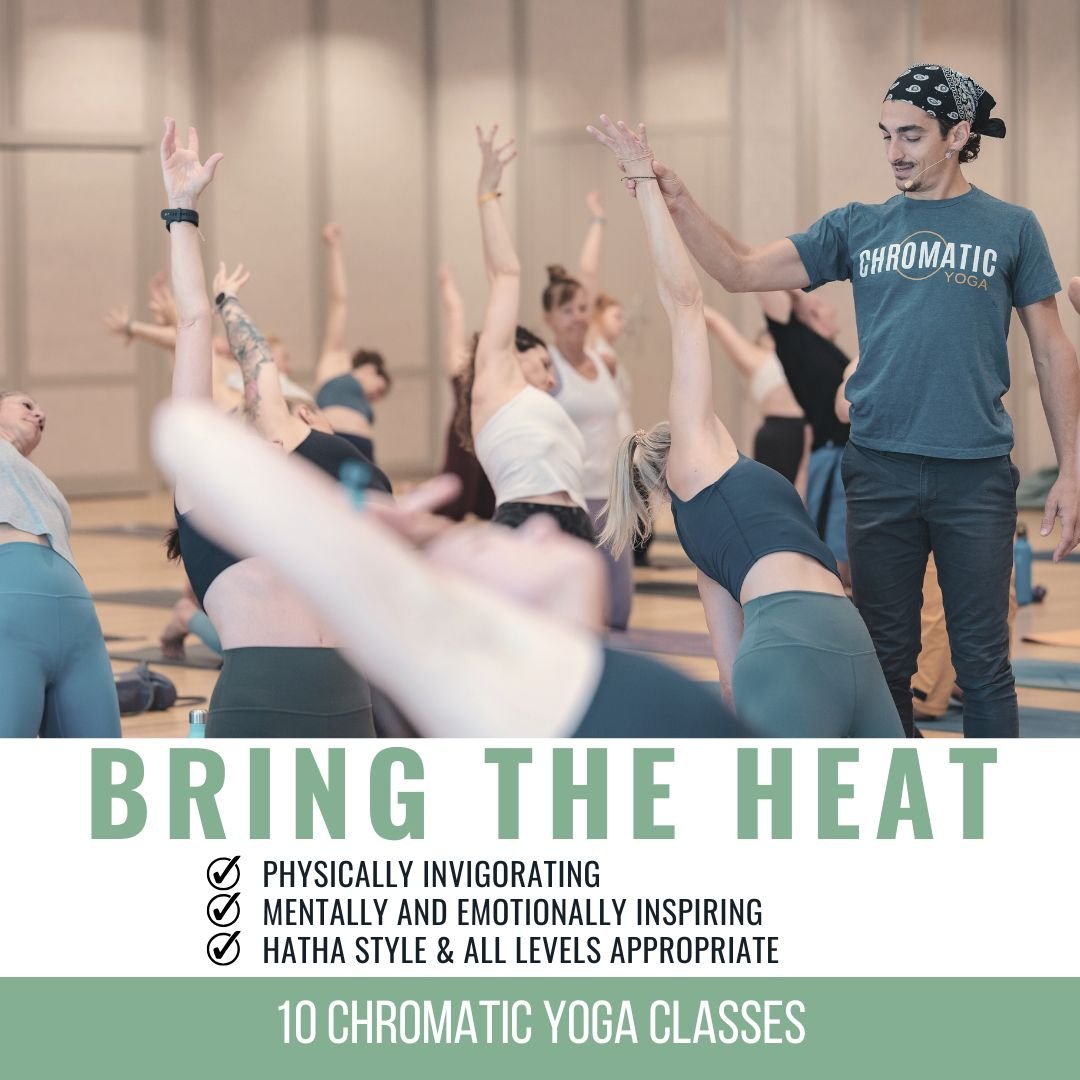Eight Angle PoseASTAVAKRASANAEIGHT ANGLE POSE Sometimes we think arm balances are about getting higher, but Matt reframes Eight Angle pose as a mechanics workshop. This posture thrives when we test rotation, pelvic placement, and upper-body stability as interconnected...
Eight Angle Pose
Eight Angle Pose
ASTAVAKRASANA
EIGHT ANGLE POSE
Sometimes we think arm balances are about getting higher, but Matt reframes Eight Angle pose as a mechanics workshop. This posture thrives when we test rotation, pelvic placement, and upper-body stability as interconnected actions. It gives us feedback about how we place weight, where our imbalances live, and what support lines might be leaking energy.
Often the pose falls apart because we close our foundation too soon. Narrow hands can make our wrists feel jammed and our elbows hug in prematurely. Wider hands give us space, clearer load lines, and a more stable base to pivot from.
When we allow the chest to go forward, dial the hips back, and treat the arm as a shelf instead of something to hug into immediately, the pose stops asking us to solve coordination mid-lift. We study the structure here so future transitions feel less complicated.
FLYING HIP OPENERS
ASANA INFUSED WITH STEP BY STEP TECHNIQUES FOR ARM BALANCES
- 10 Chromatic Yoga practices with founder Matt Giordano
- Physically Invigorating
- Foundations, Refinement and Advancement
- Meticulously Crafted Experiences to Set you up for Maximum Success
- Included Postures: Crow, Side Crow, Firefly, Dragon Fly, Revolved Flying Half Lotus, Koundenyasana 1 & 2, Hybrid Arm Balances, Straddle Handstand and More
- 12+ Arm Balances with Modifications and Variations!
- Hip Opening Techniques, Core Strength, Wrist Strength and Mobility
- All Levels Appropriate Full length 75 minute Classes
- Non-dogmatic, Anatomy informed Alignment
- The Perfect Blend of Knowledge and Practice
- A Heavy Emphasis on Technique for the Poses Everyone Expects You to Know but Non One Teaches
- 12 Continuing Education hours with Yoga Alliance and American Yoga Council
- 12 Accredited Practice Hours with the Chromatic School of Yoga
- Step-by-Step instruction for increased accessibility
- Sweat, Breath, Strengthen, Stretch and Feel Amazing!
USE A BLOCK FOR THIS IMPORTANT ACTION
For Eight Angle pose preparation, Matt places a block between the upper thighs and moves us into Navasana rehearsal with feet wider apart than instinct suggests. This width gives the body room and the brain something to organize around.
We contrast by briefly exploring external rotation so we can feel sensation versus true activation. Then we switch back into internal rotation by squeezing gently. The squeeze isn’t about tension, it’s about recruitment recall.
When the legs eventually elevate, the brain remembers where to recruit from instead of guessing. The block becomes our lower body compass, shortening the unnecessary distance between thighs and chest while conditioning the adductors and outer glute connections needed for future steps.
WATCH THE VIDEO
EIGHT ANGLE POSE: ACTIONS FOR THE HIPS & BALANCE
MECHANICS FOR THE HIPS
Matt walks us through harder two leg hip feedback drills seated, hinging far enough to anchor through the hands and attempt lifting the hips before sliding the seat back. It’s harder, but the value is in the feedback; our hamstrings and hip flexors tell the truth here without foot balancing pressure.
Next comes the Elephant Trunk drill. One knee repeatedly pulls back to prime the hip before resting on the outside elbow shelf; elbow wide, hand wide, hips remembered, friction reduced.
Finally, ankles cross and suddenly the arm and foot both act as informed shelves for the opposite leg. These layered drills teach us that mobility and timing matter more than just squeezing inward and hoping it works.
200 HOUR ONLINE TEACHER TRAINING
GET CERTIFIED & DEEPEN YOUR YOGA PRACTICE
- Deepen your yoga practice
- Build confidence speaking in front of groups in person and online
- Learn foundational class structures and templates
- Learn techniques for a wide range of yoga postures
- Get certified and highly qualified to teach yoga
- Yoga Alliance Globally Recognized Certification Program
INTERNAL ROTATION MASTERY
It’s pretty natural for us to bring our feet and elbows too close together at first. Matt reminds us to build the shelf first, using the upper arm or shin as a stable support point. From there we can explore internal rotation from a place of awareness, not force.
Sometimes if we turn inward too soon, our knees or lower back can feel uncomfortable because the body is still “guessing” instead of recalling what it should do. A helpful trick is to gently switch between external and internal rotation in practice, so the hips learn to adapt and make space in a smarter way.
We also keep the head stacked back (long neck!), and let the gaze drop down only if that helps the body connect better. When we repeat these steps, internal rotation becomes something the body understands, not something we try to improvise mid-pose.
300 HOUR ONLINE TEACHER TRAINING
GET 500 HOUR CERTIFIED AS A MASTER TEACHER
Master your skill set as a teacher through refined techniques, anatomy, biomechanics, sequencing, philosophy, meditation techniques, theming, yoga business, and much more!
- Get 500 hour certified
- Learn anatomy, biomechanics, asana techniques
- Expand your teaching skills
- Masterful sequencing and verbal delivery
- Learn meditation and breathwork techniques
- Transformative tools: theming, dharma talks, satsang
BALANCE & POWER
Now we build the partnership. Hands wide, hips tucked, chest melted forward, inner thighs rehearsed into rotation, we straighten the legs and preserve the learning we just earned. Matt cues us not to bend the elbows or clamp the feet inward too soon, because collapsing dissolves the partnership the pose depends on.
We pivot around the arm-bone shelf only after stability is established. Our psychological markers become grounded: glutes contracting underneath, hand edges pressing outward, thighs spiralling inward without abandoning the mechanics we studied during the preparation.
Even if the posture doesn’t elevate today, the body still evolves because we showed up for the system, not just the shape. Eight angle pose becomes reachable when informed action travels with us into the twist, not left behind at lift off.
Reveal the secrets into arm balance preparation by registering for Matt’s upcoming online immersion Flying Hip Openers.
The 200 Hr. Teacher Training: Click Here to See the Next Start Date
The 300 Hr. Advanced Teacher Training: Click Here to See the Next Start Date
Article by Trish Curling
Video Extracted From: Flow & Fly Immersion
ONLINE ANATOMY COURSE
- Accessible, exciting, and easy to learn
- Anatomy and biomechanics for yoga
- Appropriate for both teachers and students
- Learn joint alignment vs pose alignment
- Demystify yoga poses and transitions
- Release aches and pains
- Learn how to avoid common injuries
- Caters to all levels with modifications and props
- 20 hours Continued Education Credits with Yoga Alliance
- 20 hours toward Chromatic Yoga Certification and 300 Hour
- Lifetime access
Continue Learning
Eight Angle Pose
Approachable Arm Balances
Approachable Arm BalancesPARSVA BAKASANAAPPROACHABLE ARM BALANCES Approachable arm balances aren’t about fearlessness; they’re about informed action. When we understand the mechanics behind the posture, we gain the power to shape our own outcomes. Rather than jumping...
Perfect Protraction For Crow Pose
Perfect Protraction For Crow PoseBAKASANAPERFECT PROTRACTION FOR CROW POSE When working toward perfect protraction for Crow Pose, it’s essential to understand the role of the serratus anterior, the “fingertip” muscles that wrap around the rib cage and attach to the...
Help For Hamstrings
Help For HamstringsFLEXIBILITYHELP FOR HAMSTRINGS “Yoga butt” or high hamstring tendonitis can be a literal pain where the sit bones meet the hamstrings and glutes. This area is prone to overuse injuries, especially when repetitive forward folds overstretch rather...
Pelvic Floor and Groin Support
Pelvic Floor & Groin SupportCOREPELVIC FLOOR AND GROIN SUPPORT Pelvic floor instability can quietly influence how we move and how safe we feel in our practice. Weakness or imbalance here may lead to groin strains, hip discomfort, or even low-back issues....
Pain In The Neck
Pain In The NeckSTABILITYPAIN IN THE NECK A pain in the neck can be more than just an annoyance. It can ripple into the shoulders, spine, and even the jaw, creating discomfort that affects the whole body. Often, this pain stems from subtle misalignments: a chin that...
THE FREE TECHNIQUE PACK
When You Subscribe, You Will Get Instant Access to
- the Technique Pack: 15 yoga pose breakdowns
- exclusive online course discounts
- exclusive blogs and videos
